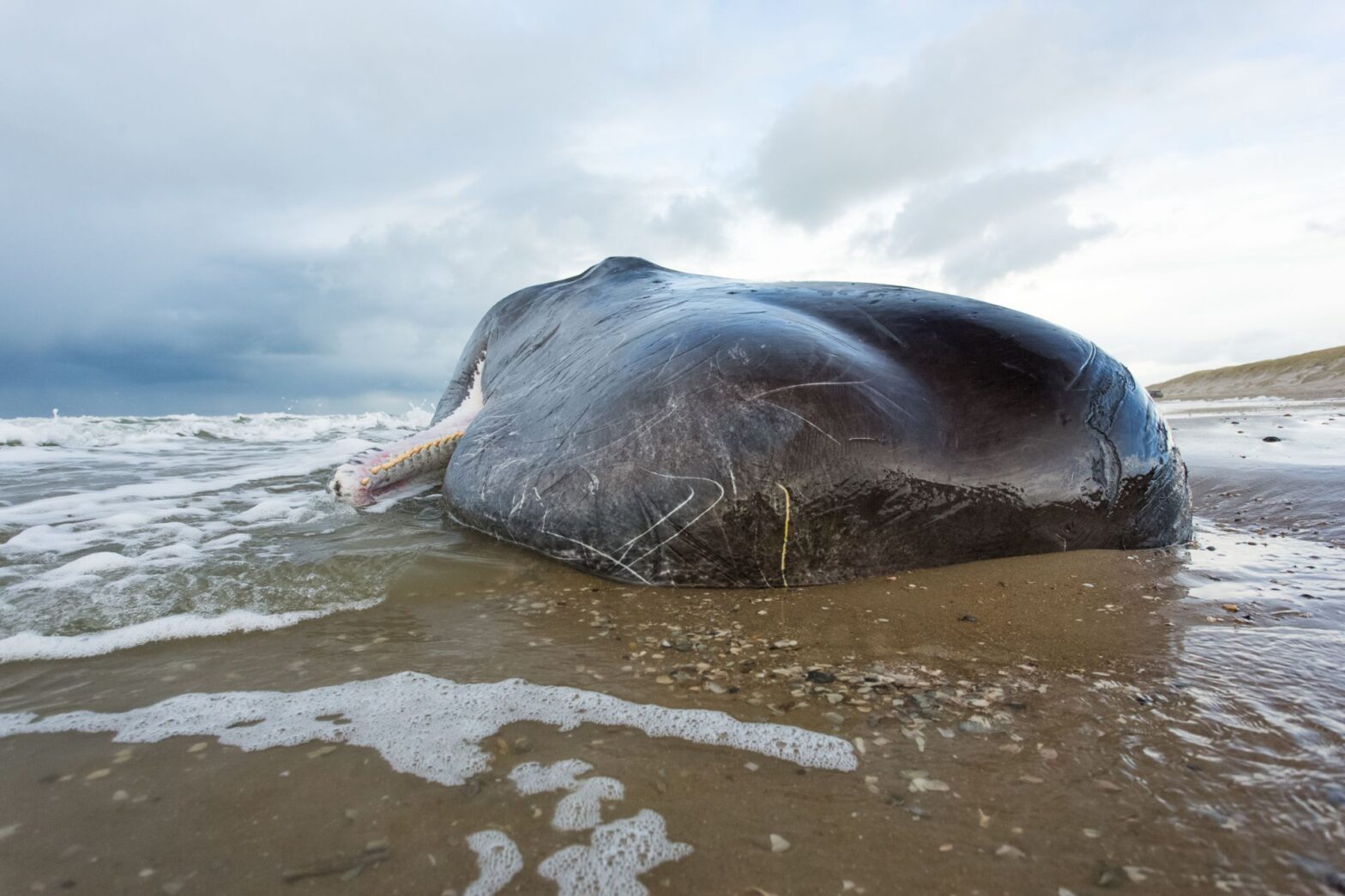The impacts of underwater noise on marine life
The oceans are predominantly an acoustic world, partly because there isn’t much light beyond 200 Meters depth and no light at all from a depth of 1,000 metres. Most marine animals depend on sound for their vital functions such as mating, finding prey, avoiding predators and hazards, sensing their environment, orientation, and communication. But it is getting louder and louder in the ocean, making it more and more difficult for many marine species to survive. This affects almost all marine animals, from the smallest plankton to the largest whale.
Man is exposing the sea to intensive noise. The impacts are devastating. Science knows a lot about the effects of underwater noise on marine mammals. Here are some examples:
Cetaceans
- Explosive sounds, e.g. from hydrocarbon exploration, causes marine mammals to avoid some noisy areas, sometimes for years, despite these being important calving or feeding grounds before the noise was introduced.
- Underwater noise can lead to reduced communication in whales and dolphins, which in turn can have a negative impact on reproduction.
- The migration of whales can be delayed by noise such that animals die because they get entrapped in ice.
- The most acute response is shown by whales and dolphins in reaction to naval anti-warfare sonar, by either fatally stranding or dying at sea probably due to decompression sickness or the «diver’s bends». Haemorrhaging to vital organs like the heart and brain can occur within 4 hours of being exposed to naval sonar.
But noise causes damage to a much broader range of marine wildlife. To gain a comprehensive insight into the consequences of underwater noise on other marine species, OceanCare commissioned a meta-study that analyses all available scientific evidence on the effects of noise on fish and invertebrates.
Fish
- A seismic airgun extensively damaged fish ears, with no recovery even after 58 days.
- Many fish species show stress responses in the presence of noise, with increased cortisol or other biochemical measures of stress. Cod broodstock exposed to noise resulted in higher cortisol in the resulting eggs, which lowered the fertilization rate by 40% and viable egg productivity by 50%, translating to a loss of about 300,000 weaned juvenile cod.
- Boat noise can reduce nest care in fish, increasing brood mortality.
- In the presence of boat noise, damselfish did not respond to alarm odours appropriately, and their ability to assess risk was impaired, likely affecting their survival.
- Noise from ferries caused tuna schools to become uncoordinated which could affect the accuracy of their migrations.
- Fisheries catch rates for cod and haddock can drop by 50-80% due to seismic airgun surveys, with corresponding negative socioeconomic effects on local fisherman.
Invertebrates
- Scallops showed a five-fold higher mortality rate when exposed to seismic airguns. Giant squid mass-stranded together with seismic airgun surveys, suffering extensive damage to their internal organs.
- A large part of the zooplankton, the basis of the marine food web, was killed within a radius of 1.2 kilometres by the use of a single airgun. Consider that hydrocarbon exploration in the seabed employs 18 to 48 airguns simultaneously!
- Embryo development was also impaired in sea hares, a slug-like marine invertebrate that grazes on toxic bacteria, and larvae suffered increased mortality after being subjected to boat noise.
- The common prawn showed signs of stress, such as DNA fragmentation, with noise, and lobsters suffered a chronic reduction in immune competency and a chronic impairment of nutritional condition, even 4 months after noise exposure.
Reptiles
- Marine turtles have been understudied in their reaction to noise. However, leatherback turtles may orient towards nesting beaches using the sound of surf breaking, making it likely that noise would affect their breeding success.
- Turtles have shown an avoidance response to airgun surveys, as well as temporary hearing damage, which was only recovered two weeks later.
Marine ecosystem
- Manila clams showed a stress response to noise which meant they could not mix the upper layers of sediment and could not feed. Lobster also were not able to circulate water within their burrows in the presence of noise. Noise thus affected fluid and particle transport, compromising nutrient availability, and the productivity and health of the ecosystem.
- Carbon dioxide cannot be taken up by plankton as well, which worsens our climate crisis.
- Fish and invertebrates are also affected by noise to the degree that the whole ecosystem can be impacted. Reproduction and feeding are compromised, and important ecosystem services, such as nutrient cycling and water filtration, are affected. This means that the ocean cannot sustain and produce life optimally, which affects us all. Carbon dioxide cannot be taken up by plankton as well, which worsens our climate crisis.
Underwater noise has significant negative impacts on marine species and ultimately on marine life as a whole. OceanCare is working at national, regional and international levels to reduce marine noise pollution, concerning both intensive noise sources, such as airguns in oil and gas exploration, and the constant noise from shipping.
Photo: Bastiaan Schuit/shutterstock.com
